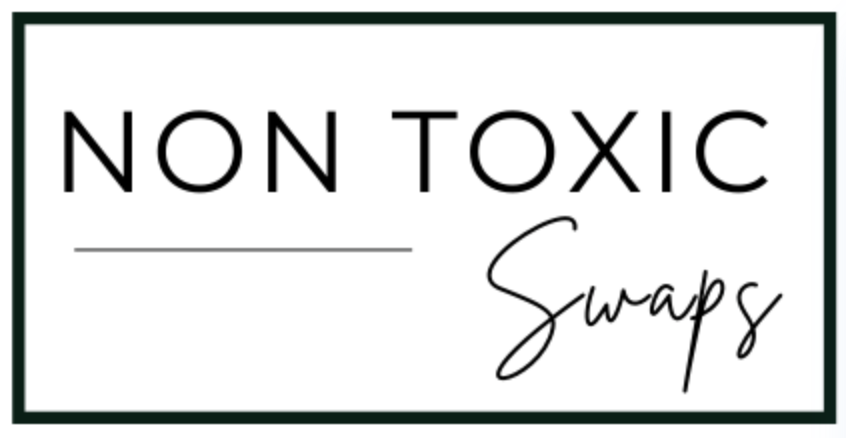Last Updated on March 22, 2025 by NonToxicSwaps
Conventional stainless steel cleaners contain harmful chemicals that are left behind on your surfaces and in the air of your home. Switch to a non toxic stainless steel cleaner you can use as a safer option.
Affiliate disclaimer: As an Amazon Associate, NonToxicSwaps.com may earn from qualifying purchases.
Why Switch to a Non Toxic Stainless Steel Cleaner?
Conventional stainless steel cleaners contain harmful chemicals that are left behind on your surfaces and in the air of your home. When we use a stainless steel cleaner, its usually on our kitchen appliances. These surface are touched often throughout the day, increasing your exposure to these chemical components.
In addition to eliminating toxins, you’ll find that cleaning with a non toxic stainless steel cleaner will also save money. The best options for cleaning stainless steel are most likely sitting in your kitchen right now.
Ingredients to Avoid When Finding a Non toxic Stainless Steel Cleaner
These ingredients are found in popular stainless steel cleaners. They are linked to health concerns and should be avoided not only in stainless steel cleaners, but all products in your home.
- Petroleum/Petrolatum: carcinogen and reproductive toxin (PubChem CID: 481187790)
- Phenoxyethanol: deemed generally safe at a 1% concentration, however it’s production process, ethoxylation, can potentially contaminate phenoxyethanol with 1,4-dioxane and ethylene oxide (see above for ethoxylated ingredient description) (PubChem CID: 31236)
- Ethoxylated ingredients (PEGs, PPGs, polysorbates, ceteareth, phenoxyethanol): ethoxylation process produces ethylene oxide, a carcinogen and developmental toxin (PubChem CID: 6354) and 1,4-dioxane, a suspected carcinogen (PubChem CID: 31275)
-
Fragrance/Parfum: umbrella term including hundreds of toxins, including hormone disrupting phthalates, as well as skin irritants and allergens. Chemicals that are hidden behind this term can be carcinogenic, respiratory irritants, endocrine disruptors, reproductive toxins, neurotoxins, and more (PMID: 35669814)
- Parabens: preservatives linked to endocrine disruption (PMID: 29596967), known to be carcinogenic due to endocrine disruption (PMID: 36746253) Parabens may be listed as methylparaben, ethylparaben, propylparaben, butylparaben, isobutylparaben, isopropylparaben, and benzylparaben.

Stainless Steel Products to Avoid
The following commonly used cleaners should be avoided due to their ingredients:
- Weiman Stainless Steel Cleaner & Polish Spray: Contains mineral oil, propylene glycol, fragrance, polydimethylsiloxane, alcohol ethoxylate, DMDM hydantoin
- Comet Stainless Steel Powder Cleanser: Contains Troclosene Sodium
- Simple Green Stainless Steel One-Step Cleaner & Polish: Contains Benzene, Trideceth-9, hexylene glycol, fragrance, isothiazolinone chloride, dimethicone
- Method Stainless Steel Cleaner + Polish: contains c13-15 alkane, sacrylates/c10-30 alkyl acrylate crosspolymer, polysorbate 80, sodium hydroxide, benzisothiazolinone, methylisothiazolinone, fragrance (parfum).
Eliminate these toxins from your household. Swap out these products with a safer option.
Best Non Toxic Stainless Steel Cleaner Options
- Hey Mom Stainless Steel Cleaner
- Meliora Gentle Home Cleaning Scrub Powder
- DIY Stainless Steel Cleaner = Vinegar + water spray, polish with olive oil on a microfiber cloth.
Ingredients: Filtered water, coconut oil, lavender & vanilla essential oils.
Ingredients: Sodium Bicarbonate (Baking Soda), Sodium Cocoate (Vegetable Soap), Cocos Nucifera Oil (Organic Coconut Oil), Glycerin, Mentha Piperita Oil (Organic Peppermint Essential Oil), Melaleuca Alternifolia Oil (Organic Tea Tree Essential Oil)
3) DIY Stainless Steel Cleaner
First clean, then polish. To clean your stainless steel, mix 50% white vinegar and 50% water in a spray bottle. Spray and wipe down the stainless steel with a microfiber cloth. To polish, add a small amount of olive oil to the microfiber cloth and wipe the stainless steel surface. It should be just enough oil to leave behind a nice shine, without and oily residue.
Remember to wipe with the grain of the stainless steel for best results.
If you haven’t already switched to an Organic Olive oil or microfiber cleaning cloths, check out theses:
Love this post? Pin it on Pinterest:










